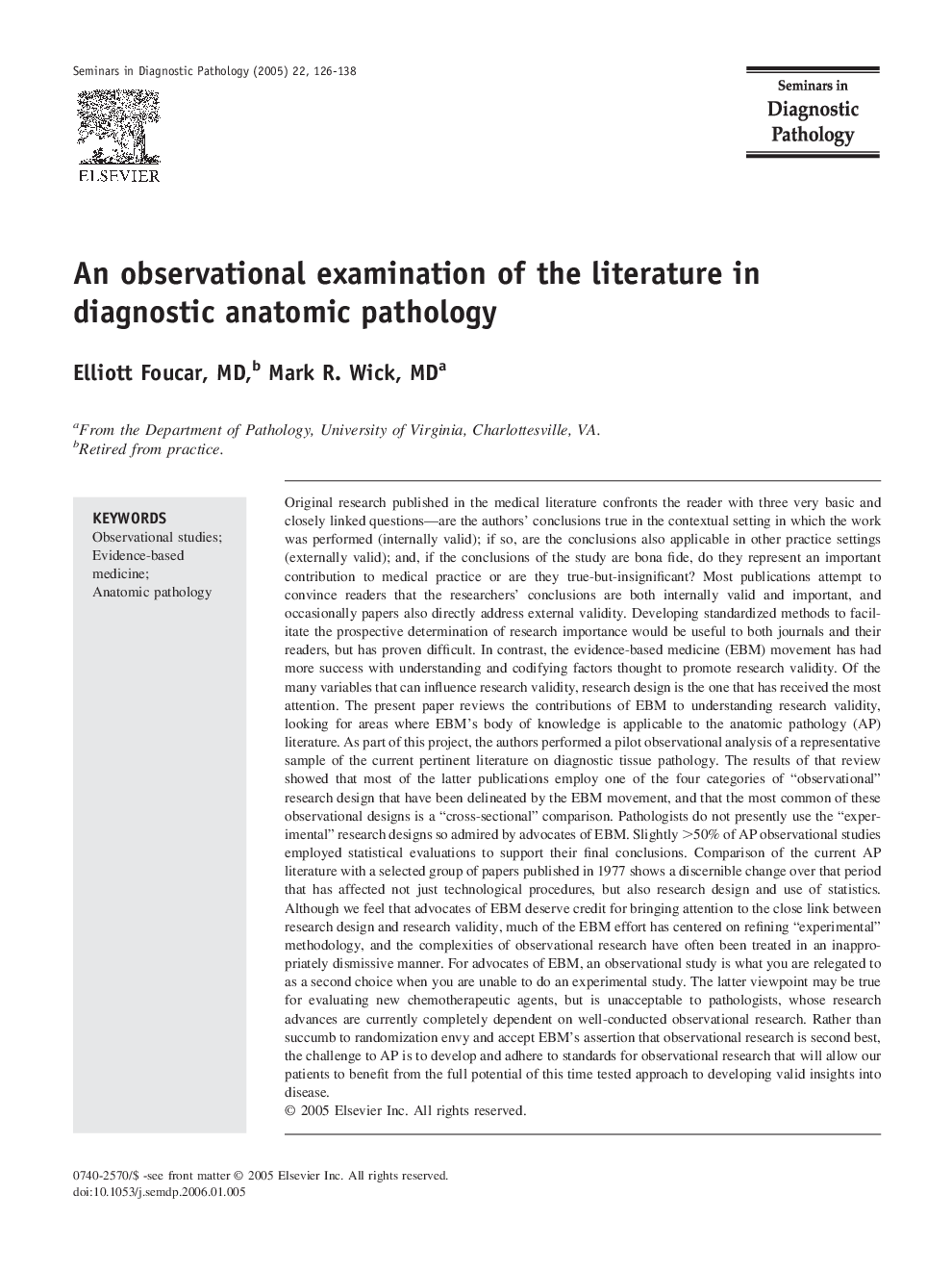| کد مقاله | کد نشریه | سال انتشار | مقاله انگلیسی | نسخه تمام متن |
|---|---|---|---|---|
| 9367594 | 1272179 | 2005 | 13 صفحه PDF | دانلود رایگان |
عنوان انگلیسی مقاله ISI
An observational examination of the literature in diagnostic anatomic pathology
دانلود مقاله + سفارش ترجمه
دانلود مقاله ISI انگلیسی
رایگان برای ایرانیان
کلمات کلیدی
موضوعات مرتبط
علوم پزشکی و سلامت
پزشکی و دندانپزشکی
آسیبشناسی و فناوری پزشکی
پیش نمایش صفحه اول مقاله

چکیده انگلیسی
Original research published in the medical literature confronts the reader with three very basic and closely linked questions-are the authors' conclusions true in the contextual setting in which the work was performed (internally valid); if so, are the conclusions also applicable in other practice settings (externally valid); and, if the conclusions of the study are bona fide, do they represent an important contribution to medical practice or are they true-but-insignificant? Most publications attempt to convince readers that the researchers' conclusions are both internally valid and important, and occasionally papers also directly address external validity. Developing standardized methods to facilitate the prospective determination of research importance would be useful to both journals and their readers, but has proven difficult. In contrast, the evidence-based medicine (EBM) movement has had more success with understanding and codifying factors thought to promote research validity. Of the many variables that can influence research validity, research design is the one that has received the most attention. The present paper reviews the contributions of EBM to understanding research validity, looking for areas where EBM's body of knowledge is applicable to the anatomic pathology (AP) literature. As part of this project, the authors performed a pilot observational analysis of a representative sample of the current pertinent literature on diagnostic tissue pathology. The results of that review showed that most of the latter publications employ one of the four categories of “observational” research design that have been delineated by the EBM movement, and that the most common of these observational designs is a “cross-sectional” comparison. Pathologists do not presently use the “experimental” research designs so admired by advocates of EBM. Slightly >50% of AP observational studies employed statistical evaluations to support their final conclusions. Comparison of the current AP literature with a selected group of papers published in 1977 shows a discernible change over that period that has affected not just technological procedures, but also research design and use of statistics. Although we feel that advocates of EBM deserve credit for bringing attention to the close link between research design and research validity, much of the EBM effort has centered on refining “experimental” methodology, and the complexities of observational research have often been treated in an inappropriately dismissive manner. For advocates of EBM, an observational study is what you are relegated to as a second choice when you are unable to do an experimental study. The latter viewpoint may be true for evaluating new chemotherapeutic agents, but is unacceptable to pathologists, whose research advances are currently completely dependent on well-conducted observational research. Rather than succumb to randomization envy and accept EBM's assertion that observational research is second best, the challenge to AP is to develop and adhere to standards for observational research that will allow our patients to benefit from the full potential of this time tested approach to developing valid insights into disease.
ناشر
Database: Elsevier - ScienceDirect (ساینس دایرکت)
Journal: Seminars in Diagnostic Pathology - Volume 22, Issue 2, May 2005, Pages 126-138
Journal: Seminars in Diagnostic Pathology - Volume 22, Issue 2, May 2005, Pages 126-138
نویسندگان
Elliott MD, Mark R. MD,